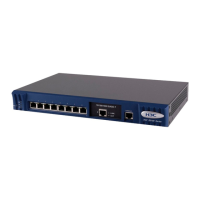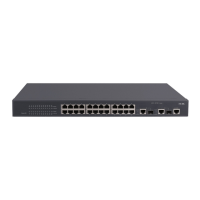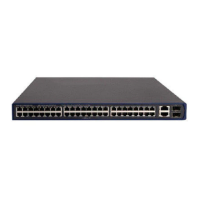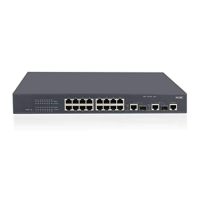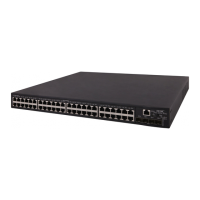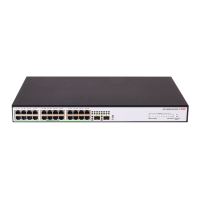1-2
z If you configure broadcast-suppression command in both system view and Ethernet port view,
the configuration in Ethernet port view will take effect.
z If the broadcast traffic threshold configured by using the broadcast-suppression pps max-pps
command in system view is greater than the maximum broadcast traffic rate allowed on an
Ethernet port, the maximum broadcast traffic rate allowed takes effect on the port.
z With traffic policing enabled, broadcast-suppression function cannot be enabled either on
System view or Ethernet port view. Refer to the QoS part for information about Traffic Policing.
Example
# Allow incoming broadcast traffic on each port to occupy up to 20% of the total transmission capacity of
the port and suppress the broadcast traffic that exceeds this threshold.
<Sysname> system-view
System View: return to User View with Ctrl+Z.
[Sysname] broadcast-suppression 20
Note:Broadcast-suppression is set successfully on all ports except reflector ports, fabric
ports and the port configured storm-constrain!
# Set the maximum rate of incoming broadcast bits allowed on Ethernet 1/0/2 to 128 kbps.
[Sysname] interface Ethernet 1/0/2
[Sysname-Ethernet1/0/2] broadcast-suppression bps 128
copy configuration
Syntax
copy configuration source { interface-type interface-number | aggregation-group source-agg-id }
destination { interface-list [ aggregation-group destination-agg-id ] | aggregation-group
destination-agg-id }
View
System view
Parameter
interface-type: Port type.
interface-number: Port number.
source-agg-id: Source aggregation group number, in the range of 1 to 52. The port with the smallest
port number in the aggregation group is used as the source port.
destination-agg-id: Destination aggregation group number, in the range of 1 to 52.
interface-list: Destination port list, interface-list = interface-type interface-number [ to interface-type
interface-number ] &<1-10. &<1-10> means that you can input up to 10 ports/port ranges.
Description
Use the copy configuration command to duplicate the configuration of a port to specified ports to keep
consistent configuration on them.
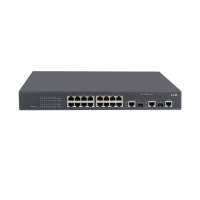
